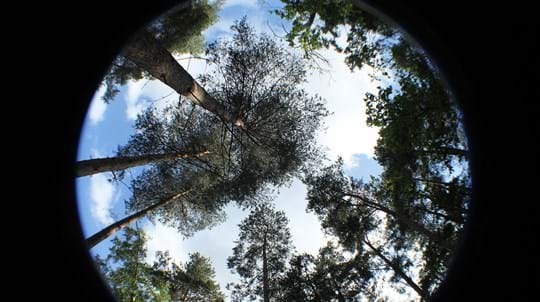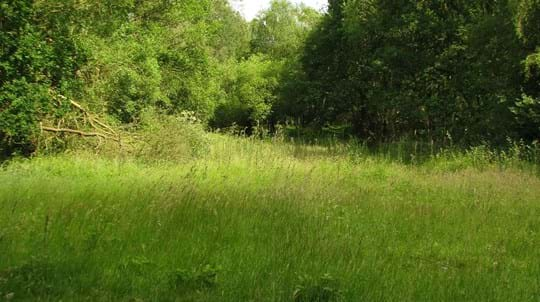
Barley Mow Wood
Knaphill

Woodland Trust wood
10.40 ha (25.70 acres)
SU966592
Explorer 145
OS Landranger 186
Located on the edge of busy Woking in northwest Surrey, this 10-hectare (26-acre) woodland provides a vital refuge for wildlife.
This urban woodland provides the local community with access to nature, offering a network of paths that help visitors explore the 48 different tree species that thrive here. Barley Mow Wood acts as a conduit to its past, giving people the chance to seek out non-native species that are a remnant of historical land use.
Features
- Parking nearby
- Public access
- Grassland
- Broadleaved woodland
How to get to Barley Mow Wood
Barley Mow Wood is situated just to the north of Knaphill, a suburban village close to Woking, within the Thames Basin Heaths.
From Woking take Lockfield Drive towards Knaphill, turning left after the Robin Hood Roundabout onto Locksley Drive. Turn right onto Robin Hood Road, which merges into Barnby Road through Knaphill. Turn left onto Anchor Hill and right onto Barley Mow Lane. Barley Mow Wood entrance is located on the right.
The closest train station is in Woking, on the South West Main Line.
Visit National Rail for more information.
The nearest bus-stop is close by and at the Royal Oak pub on Anchor Hill. From the stop it is a short walk across Waterers Park playing fields to the wood.
Visit Traveline for more information.
The wood is within walking distance of Knaphill. Four public rights of way also transect the wood and there are many entrance points into the wood from the adjacent Waterers Park recreational ground and from Barley Mow Lane to the west of the wood.
Facilities and access
The wood is well served with many unsurfaced criss-crossing paths. Due to the clay soils please wear suitable footwear and be prepared for muddy conditions when it's wet.
Four public rights of way also transect the wood and there are many entrance points into the wood from the adjacent Waterers Park recreational ground and from Barley Mow Lane to the west of the wood.
Car parking is available in the public car park of Waterers Park and there is space of one vehicle in a layby along Chobham road.
The nearest public toilets are at Waterers Park, but there is no disabled facility. If these toilets are closed for maintenance then there are public toilets on the High Street, Knaphill.
Wildlife and habitats
Barley Mow Wood acts as an important corridor, connecting wildlife to larger local nature reserves of White Rose Lane and Mayford Meadows and Horsell Common.
Animals
There are two small meadows within the wood – where in the summer months you’ll find meadow brown, ringlet and speckled wood butterflies.
You’ll be in for a real treat if you’re lucky enough to spot our smallest owl, the little owl; although mainly nocturnal, the little owl can be spotted in the day hunting. Their numbers are declining nationally, as are the meadow pipit’s, which you may hear, with its high, piping call. You may also spot reed bunting.
Trees, plants and fungi
Barley Mow Wood is a planted woodland, with a variety of native broadleaves. Oak and beech make up most of the canopy, complemented by a diverse understorey including hornbeam, willow and white poplar.
Keep your eyes peeled for non-native trees along the paths – atlas cedar, giant redwood, white poplar, and red oak – a reminder of the site’s past.
Pockets of bluebells and dog’s mercury are dotted around the woodland floor, as is garlic mustard, lords and ladies, nettle and the occasional patch of bracken.
Invertebrates and fungi have set up home in the deadwood of the large beech trees that fell in the storm of 1987.
Habitats
Meander through the broadleaved secondary woodland, which is dominated by oak and beech, and relax in the two meadows, found in the northwest part of the site.
About Barley Mow Wood
Barley Mow Wood has an intriguing history. The woodland appeared in the 19th century as a later addition to a farm and plant nursery that was world-renowned for growing rhododendrons and azaleas. Before this time the land was open fields.
It fell out of nursery management at the end of the Second World War, but remnants of the formal layout can still be seen. Keep an eye out for clumps of a single species, like yew in the eastern corner and the scattering of specimen trees like Wellingtonia and exotics like bamboo.
Older historical features are also present with an old bank and ditch running north-south across the wood and old boundary banks around parts of the perimeter. All these are thought to be medieval in origin and mark old field boundaries.
The Woodland Trust purchased this site in 1992 after a successful fundraising appeal, and it's now under a Tree Preservation Order designated by Woking Borough Council.
Things to do in Barley Mow Wood
With many paths criss-crossing the wood, you can enjoy a variety of walking routes. Please take care in winter as these are all unsurfaced and occasionally muddy.





















